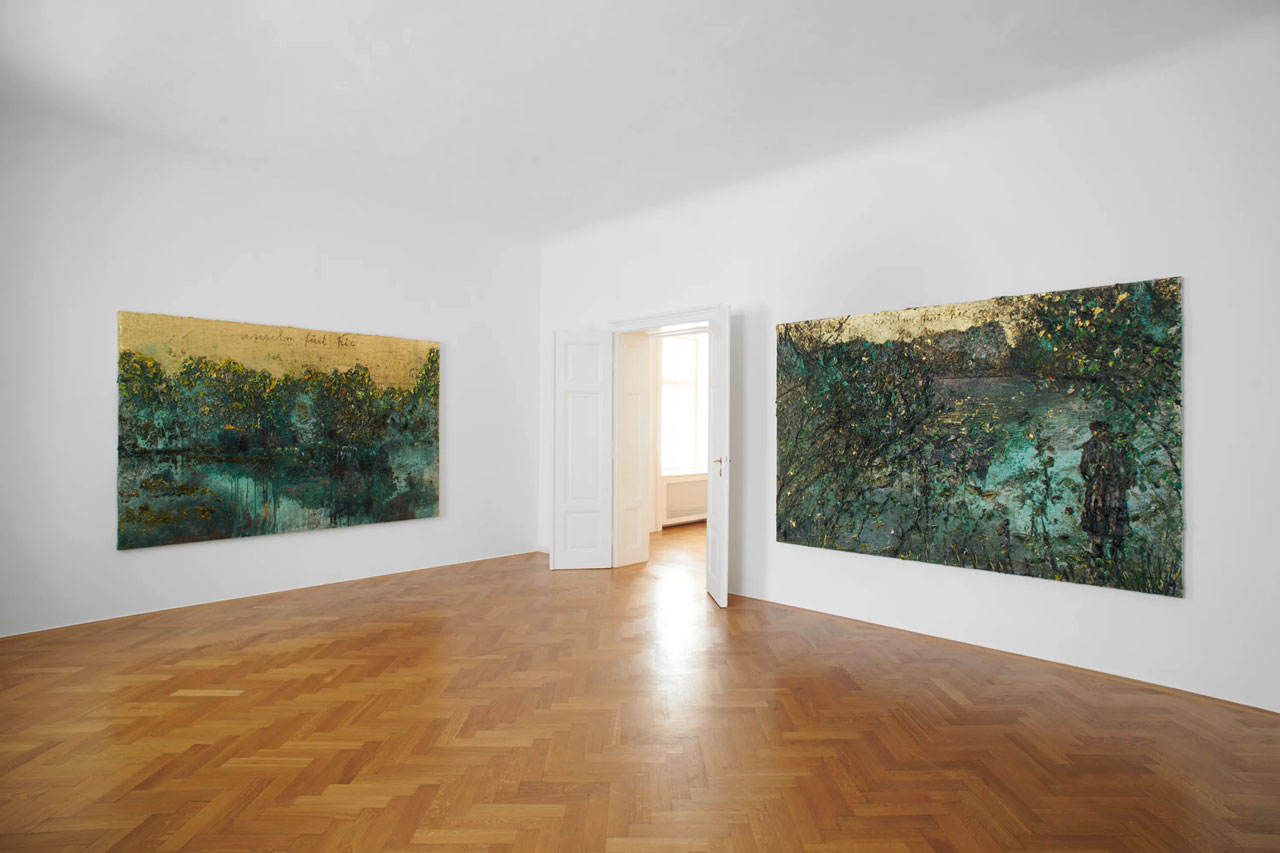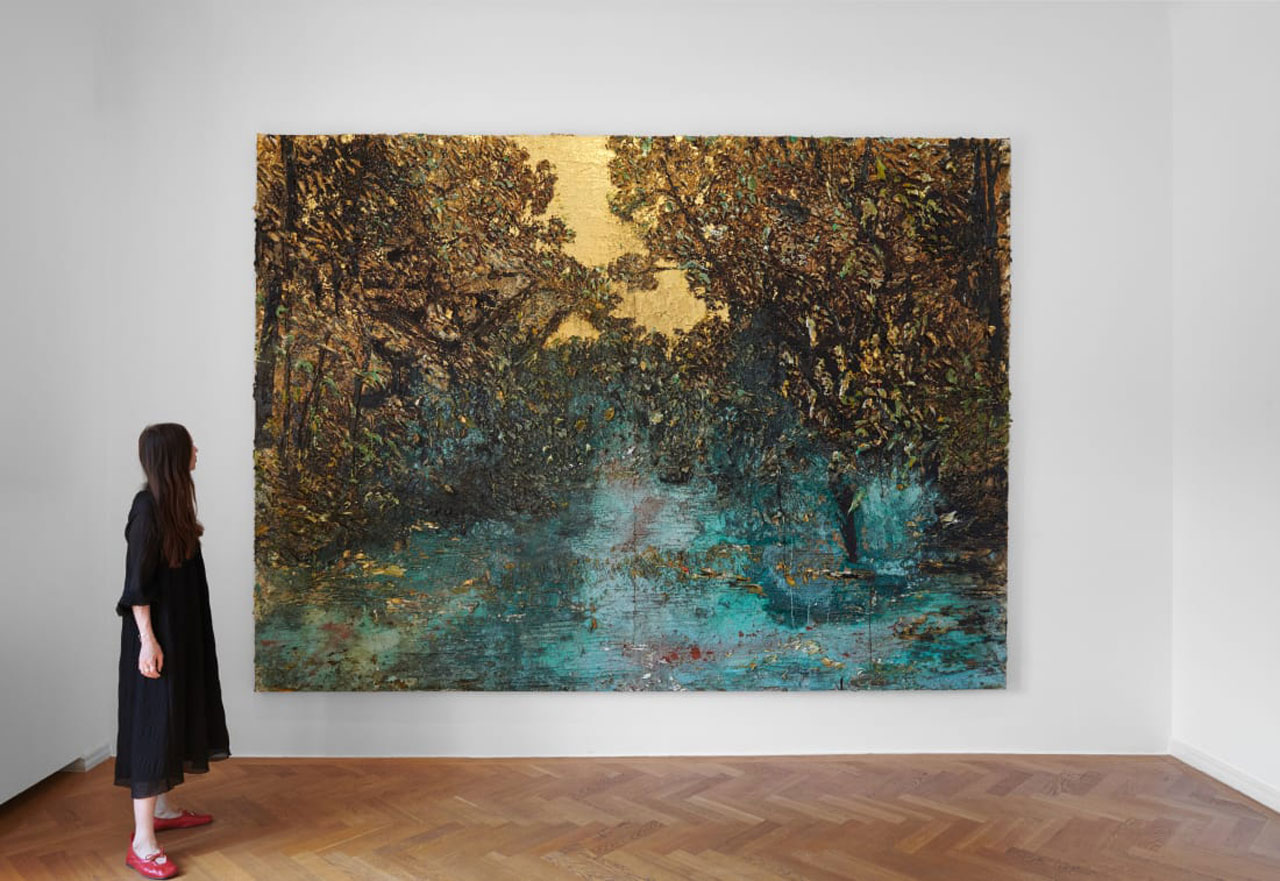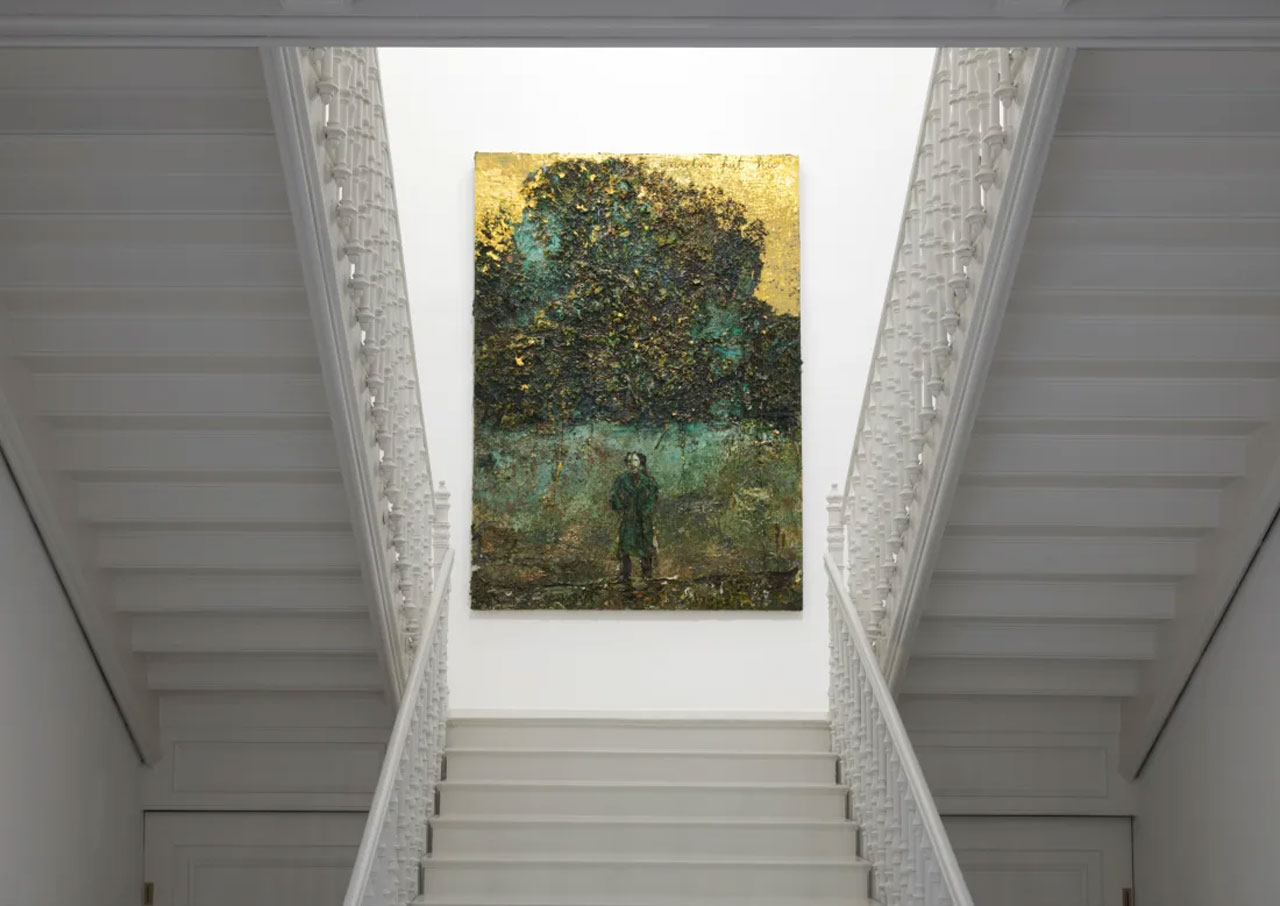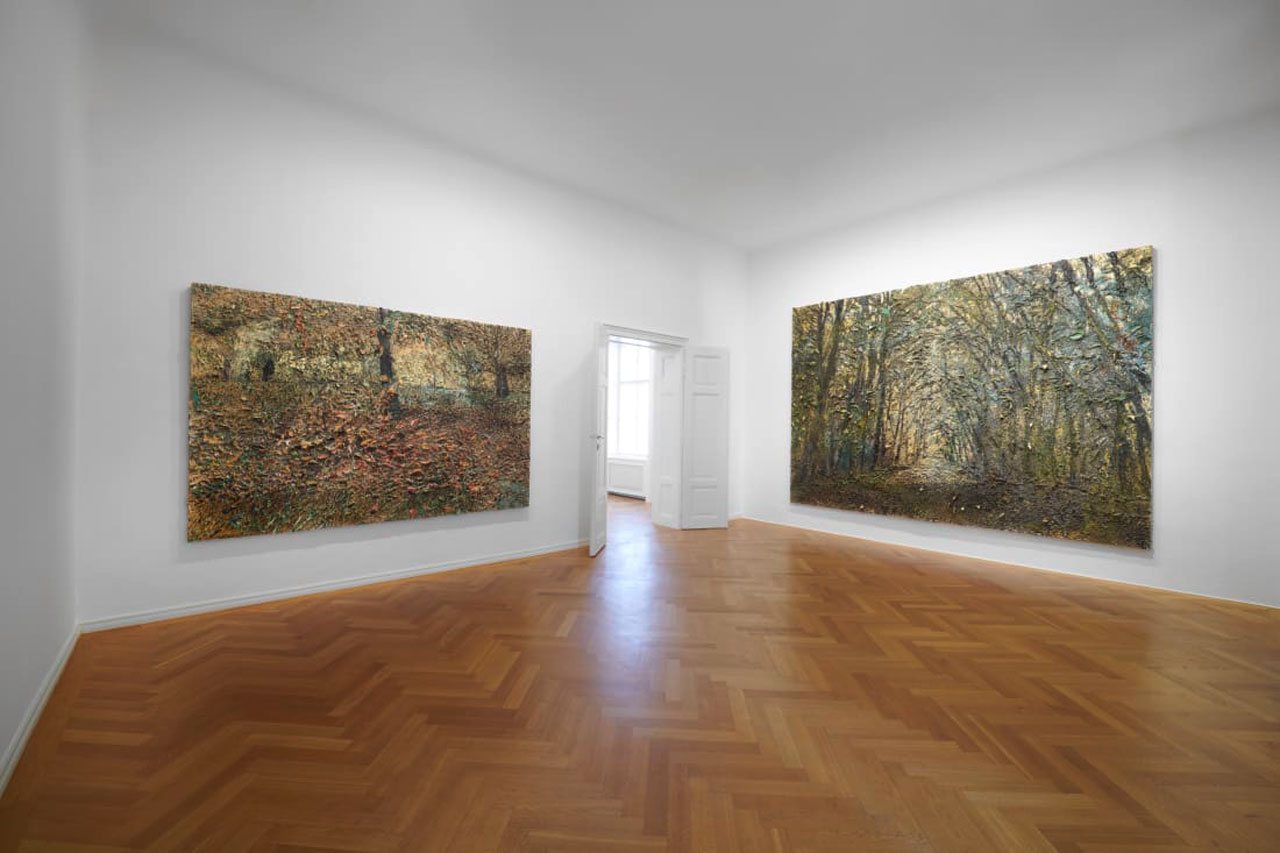PRESENTATION: Anselm Kiefer-Mein Rhein
 Anselm Kiefer’s ongoing preoccupation with cultural memory, identity and history lends his works their multi-layered subject matter, fueled by a variety of historical, mythological and literary sources. These include references to Greek and Germanic mythology, alchemy, and Christian symbolism, as well as the writings of celebrated medieval lyricist Walther von der Vogelweide, Romanian-born poet Paul Celan, French poet and critic Charles Baudelaire, Russian Futurist Velimir Khlebnikov, and Austrian post-war poet Ingeborg Bachmann, among others.
Anselm Kiefer’s ongoing preoccupation with cultural memory, identity and history lends his works their multi-layered subject matter, fueled by a variety of historical, mythological and literary sources. These include references to Greek and Germanic mythology, alchemy, and Christian symbolism, as well as the writings of celebrated medieval lyricist Walther von der Vogelweide, Romanian-born poet Paul Celan, French poet and critic Charles Baudelaire, Russian Futurist Velimir Khlebnikov, and Austrian post-war poet Ingeborg Bachmann, among others.
By Dimitris Lempesis
Photo: Thaddaeus Ropac Gallery Archive
The preservation of knowledge is an important theme for Anselm Kiefer, whose extensive study of history and literature informs his practice. This is reflected in his numerous artist’s books and book sculptures, which represent important repositories of learning, religion and culture. He inscribes lines of poetry, quotations and names in his distinctive handwriting on works that pay tribute to predecessors who have shaped our knowledge and understanding of the world. The exhibition “Mein Rhein” presents new works by the artist that pay homage to the Rhine River and its surrounding woodlands – the place of the artist’s childhood. Kiefer grew up in the Black Forest region in close proximity to the river, and its east bank was the site of many of his early adventures. Marking the border with France, the Rhine held a great fascination for the artist, while simultaneously representing an end point to his world at the time. In addition to large-scale canvases, the exhibition also presents a vitrine work as well as a selection of Kiefer’s childhood drawings, providing visitors with an insight into the artist’s earliest confrontations with the river. These first ever renditions of the subject, to which he has repeatedly returned over the decades, allow glimpses into his youthful imagination, while highlighting the enduring influence of his earliest experiences on his artistic practice. In his paintings, the artist portrays the river in hues of deep turquoise against luminous skies of gold, glistening like a ‘reflection of the Nibelungen treasure that has slumbered in its deepest depths since time immemorial,’ as art historian Florian Illies writes in the catalogue accompanying this exhibition. Kiefer’s depiction of the solitary figure on the riverbank – a self-portrait of the artist – is reminiscent of Caspar David Friedrich’s “Wanderer above the Sea of Fog” (1818). In a group of works within the series, Kiefer has written their title “Anselm fuit hic” (Anselm was here) in his characteristic cursive handwriting on the upper edge of the picture. This references Jan van Eyck’s signature on his famous “Arnolfini Portrait” (1434), which is believed to have documented the artist’s presence at the marital scene. ‘For the first time in history the artist became the perfect eye-witness in the truest sense of the term,’ writes Ernst Gombrich about this icon of art history. In Kiefer’s works, this same declaration of presence is inscribed on the gold plane above the river, ‘as if to say: I was here, the Rhine is mine, it’s my paradise and my Hell, it’s my remembrance and my curse, it’s my elixir of youth and my baptismal font, it’s my abyss and my reservoir: it is my Rhine and my everything,’ as Illies writes. Three works titled “Waldsteig” depict lush forests in rich autumn browns, referencing the narrow path that led Kiefer to the river as a child. This recurring motif in the artist’s oeuvre further alludes to the eternal cycle of nature and, in turn, to themes of transience, decay and the passage of time. ‘They tell of the passing of summer, that something is nearing its end,’ writes Illies. The motifs of autumn are echoed in the large glass vitrine presented in the exhibition. It contains a set of scales and a plethora of brown leaves, seemingly tumbling from a different world. Kiefer has been creating this type of artwork since the 1980s; they are vessels for the unimaginable and invisible abundance that surrounds us, while reinforcing themes of alienation and isolation. Through his practice, the artist explores the fundamental questions of human existence through the depiction of nature. Drawing on the philosophy of Robert Fludd, Kiefer presents the viewer with a microcosm that stands for the entire universe and, at the same time, unites the eternal cycle of creation and decay. As is typical of Kiefer’s work, the paintings are characterized by a powerful materiality, created through the dense layering of materials, including gold leaf and sediments of electrolysis. Themes of transformation and the passage of time are not only expressed thematically but are also incorporated into the work itself on a formal level; the dense tactility suggests the accumulation of knowledge and history, while the transmutational process through which Kiefer puts his works and his use of gold are rooted in his lifelong interest in alchemy. Practiced throughout the mediaeval world, this ancient science sought to transform the basest of metals into the most precious and pure, forging a profound connection between the human and natural worlds. With this exhibition, Kiefer journeys back into his own past, interweaving his personal memories with historical, literary, and mythological references. The paintings that Kiefer created, shimmer like ‘the gold of the Nibelungen,’ as Illies observes, evoking the most famous of the German sagas. Notoriously appropriated by the Nazi regime – ‘abused’ by the past as Kiefer has stated – the legend of the Nibelungen bestows upon the Rhine a mystical weight that has moved the artist since his youth. Symbolizing all of Germany in a sense, the Rhine has inspired a multitude of writings and poems over the centuries, many of which are now echoed in Kiefer’s works. Friedrich Hölderlin, whose poetry has accompanied Kiefer for the most part of his life, was famously captivated by the Rhine, dedicating a celebrated hymn to the river. More than 100 years later, Martin Heidegger devoted himself to this ode to the Rhine, declaring ‘my thinking has an inescapable connection to Hölderlin’s poetry.’ Kiefer’s ongoing exploration of identity and history has resulted in a multi-layered and complex iconography rooted in the artist’s reflection on his personal biography and cultural heritage.
Photo: Anselm Kiefer, Anselm fuit hic, 2023, Emulsion, oil, acrylic, shellac, gold leaf and sediment of electrolysis. 190 x 280 cm (74.8 x 110.24 in), © Anselm Kiefer, Courtesy the artist and Thaddaeus Ropac Gallery
Info: Thaddaeus Ropac Gallery, Salzburg Villa Kast, Mirabellplatz 2, Salzburg, Austria, Duration: 26/7-28/9/2024, Days & Hours: Mon-Sat 10:00-18:00, https://ropac.net/



Right: Installation view “Anselm Kiefer: Mein Rhein”, Thaddaeus Ropac Gallery, Salzburg, 2024, Courtesy the artist and Thaddaeus Ropac Gallery




